Sarah L. Johnson's Blog, page 85
November 13, 2015
Book review: Along the Infinite Sea by Beatriz Williams
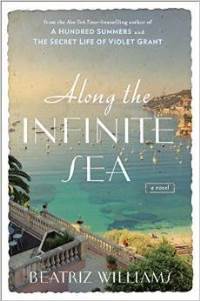 Two heroines – one beautiful and innocent, the other beautiful and jaded – share the stage in Williams’ cinematic novel, which wraps up her trilogy about the upper-class Schuyler sisters. Left pregnant by a prominent (and married) senator, Pepper Schuyler has traveled south to Palm Beach in 1966 to sell the vintage Mercedes roadster she’s spent the summer helping to restore. She hopes the money – an astounding $300K – will help her establish a new life away from her relatives and her ex-lover, who wants to pressure her into an abortion.
Two heroines – one beautiful and innocent, the other beautiful and jaded – share the stage in Williams’ cinematic novel, which wraps up her trilogy about the upper-class Schuyler sisters. Left pregnant by a prominent (and married) senator, Pepper Schuyler has traveled south to Palm Beach in 1966 to sell the vintage Mercedes roadster she’s spent the summer helping to restore. She hopes the money – an astounding $300K – will help her establish a new life away from her relatives and her ex-lover, who wants to pressure her into an abortion.To the surprise of the world-weary, cynical Pepper, the buyer takes interest in her situation. Annabelle Dommerich, a mysterious widow of European extraction, claims to have personal experience with Pepper’s predicament, and she also knows the car intimately well. “Twenty-eight years ago, I drove from my life across the German border inside that car, and I left a piece of my heart inside her,” Annabelle tells her.
Her story, which unfolds alongside Pepper’s, is the more gripping of the two. In 1935, Annabelle de Créouville, aged nineteen, spends the summer at her father’s villa along the gorgeous Côte d’Azur. There she falls in love with Stefan Silverman, a wounded Jewish man her brother asks her to help (which she does, unquestioningly). Playing out amidst the sun-dappled islands of the French Riviera, their affair is divinely romantic, but Annabelle is kept ignorant of the intrigue surrounding Stefan’s presence. We know from the beginning about Annabelle’s eventual marriage to Johann von Kleist, a baron and high-ranking Nazi, but, in tantalizing fashion, Williams keeps us guessing about the man with whom she escaped to America.
With its multiple twists, clever dialogue, and well-balanced blend of romance and thrilling adventure, the novel is smart and sexy escapist reading. It cries out for a film treatment.
Along the Infinite Sea was published by Putnam on November 3rd ($26.95/C$32.95, hardcover, 456pp). This review first appeared in November's Historical Novels Review. If you missed the first two books in the series, they're The Secret Life of Violet Grant and Tiny Little Thing . I recommend them all, and you don't need to read them in order (although I did).
Published on November 13, 2015 09:52
November 10, 2015
Place, time, and memory: Lucy Foley's The Book of Lost and Found
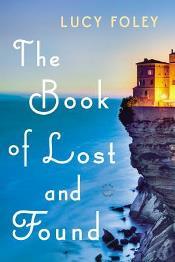 Spanning most of the 20th century, The Book of Lost and Found is the sort of sweeping multi-period saga I seek out, one that promises to carry me away on a journey of discovery along with the characters.
Spanning most of the 20th century, The Book of Lost and Found is the sort of sweeping multi-period saga I seek out, one that promises to carry me away on a journey of discovery along with the characters. In 1986, Kate Darling is a 27-year-old photographer still mourning her mother, June, a celebrated ballerina; the two had been exceptionally close. After the subsequent death of June’s adoptive mother, Evie, Kate is shaken to learn that Evie had withheld information about June’s birth mother. An exquisite decades-old sketch of a beautiful dark-haired woman with a striking resemblance to June leads Kate to renowned artist Thomas Stafford, now an elderly widower living on Corsica.
Intervening sections reveal the tale of a long-ago love that transformed Tom’s life. He and Alice Eversley, born into different social classes, become friends as children, when their families vacation on Cornwall during the lazy summer of 1913. They meet again at an English house party in 1928. Although separated due to life circumstances, neither forgets the other.
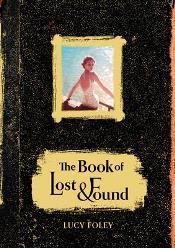 “How could a mere few strokes of pen do that, exert such a pull of memory and emotion?” Foley’s elegiac tone suits her story about love, loss, and people’s connections to the past. Each locale is skillfully described, from the rocky Corsican coast, with its heady scent of herbs and salt, to the bohemian 1920s and, later, the terror of wartime France. While Alice is a brave, unselfish heroine, at times Kate feels immature in comparison. For example, I puzzled at her habit of wearing jeans and crumpled T-shirts for important meetings. The novel also jumped abruptly from one viewpoint to another in the later sections.
“How could a mere few strokes of pen do that, exert such a pull of memory and emotion?” Foley’s elegiac tone suits her story about love, loss, and people’s connections to the past. Each locale is skillfully described, from the rocky Corsican coast, with its heady scent of herbs and salt, to the bohemian 1920s and, later, the terror of wartime France. While Alice is a brave, unselfish heroine, at times Kate feels immature in comparison. For example, I puzzled at her habit of wearing jeans and crumpled T-shirts for important meetings. The novel also jumped abruptly from one viewpoint to another in the later sections. While imperfect, this debut novel has much to recommend it. Fans of Kimberley Freeman, Lucinda Riley, and Rachel Hore will want to look for it.
The Book of Lost and Found was published by Back Bay/Hachette in August ($14.99/C$17.99, pb, 432pp). Previously, it was published by Harper UK. I reviewed it for the Historical Novels Review's November issue. Which cover do you like best? The US design, at top left, is based on an actual photograph of the Corsican coastline, which amazed me. What a view!
Published on November 10, 2015 13:51
November 7, 2015
Book review: Home By Nightfall by Charles Finch
It’s the autumn of 1876, and ten months after the events in
The Laws of Murder
, gentleman detective Charles Lenox finds his attention pulled in multiple directions. All of London is absorbed by the curious disappearance of a German pianist from the theatre where last performed. It appears at first to be a classic locked-room mystery, and Lenox knows that if his agency finds Herr Muller’s whereabouts, the public accolades they’ll receive will mean more business.
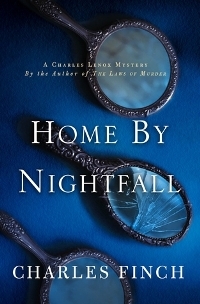 Family obligations take precedence, though. A responsible man who senses when he’s needed, Lenox opts to follow his older brother, Sir Edmund, back to Lenox House in Sussex, to keep him company after the untimely death of his beloved wife, Molly.
Family obligations take precedence, though. A responsible man who senses when he’s needed, Lenox opts to follow his older brother, Sir Edmund, back to Lenox House in Sussex, to keep him company after the untimely death of his beloved wife, Molly.
With its hallmarks of traditional English country life – the “lovely green springy Sussex turf," a centuries-old Saturday market, and the tall spire of St. James’s overlooking the town – Markethouse would be a calm respite from the fast-paced life in London, if not for some odd events. A local insurance salesman, hearing that Lenox is in town, reports seeing someone in his house and finding a disturbing figure drawn in chalk on his stoop. That’s not all, of course. Events escalate from there.
Lenox’s upper-class upbringing gives his investigations a deliberate approach; one has the sense that he knows what he’s doing. The storyline incorporates gentle humor at appropriate times. So many townspeople congratulate Lenox on moving back to his childhood home for good that after a point, he charmingly decides to give up correcting them. As is his habit, Lenox decides to take charge, meeting a number of interesting townspeople: charwomen, the ultra-competent mayor, and an elderly woman who serves as the town’s institutional memory; all towns deserve to have such a resource!
In addition to the separate mysteries (it isn’t giving anything away to say that there aren’t any contrivances that intertwine them), the novel’s highlight is the insight it provides into the brothers’ close relationship: the terrible loss that Edmund internalizes, and the ways in which Lenox supports him at the most painful time of his life. These people truly care about one another, which makes it easy for readers to care for them as well.
Home By Nightfall, book 9 in the Charles Lenox mystery series, is published by Minotaur this week ($25.95/C$29.99, hb, 294pp). Thanks to the publisher for approving my NetGalley access.
 Family obligations take precedence, though. A responsible man who senses when he’s needed, Lenox opts to follow his older brother, Sir Edmund, back to Lenox House in Sussex, to keep him company after the untimely death of his beloved wife, Molly.
Family obligations take precedence, though. A responsible man who senses when he’s needed, Lenox opts to follow his older brother, Sir Edmund, back to Lenox House in Sussex, to keep him company after the untimely death of his beloved wife, Molly.With its hallmarks of traditional English country life – the “lovely green springy Sussex turf," a centuries-old Saturday market, and the tall spire of St. James’s overlooking the town – Markethouse would be a calm respite from the fast-paced life in London, if not for some odd events. A local insurance salesman, hearing that Lenox is in town, reports seeing someone in his house and finding a disturbing figure drawn in chalk on his stoop. That’s not all, of course. Events escalate from there.
Lenox’s upper-class upbringing gives his investigations a deliberate approach; one has the sense that he knows what he’s doing. The storyline incorporates gentle humor at appropriate times. So many townspeople congratulate Lenox on moving back to his childhood home for good that after a point, he charmingly decides to give up correcting them. As is his habit, Lenox decides to take charge, meeting a number of interesting townspeople: charwomen, the ultra-competent mayor, and an elderly woman who serves as the town’s institutional memory; all towns deserve to have such a resource!
In addition to the separate mysteries (it isn’t giving anything away to say that there aren’t any contrivances that intertwine them), the novel’s highlight is the insight it provides into the brothers’ close relationship: the terrible loss that Edmund internalizes, and the ways in which Lenox supports him at the most painful time of his life. These people truly care about one another, which makes it easy for readers to care for them as well.
Home By Nightfall, book 9 in the Charles Lenox mystery series, is published by Minotaur this week ($25.95/C$29.99, hb, 294pp). Thanks to the publisher for approving my NetGalley access.
Published on November 07, 2015 05:00
November 5, 2015
Race in historical fiction: a guest post by Libby Ware, author of Lum
Libby Ware, author of Lum (reviewed this past Sunday), is here today with an essay on an important but complex and sensitive topic in historical fiction: writing about race in historical times.
~
Race in Historical FictionBy Libby Ware
As W. E. B. DuBois said, "The problem of the twentieth century is the problem of the color-line." I’d like to add that the problem was central to the nineteenth century and still is in the twenty-first century, as well. The problem for white writers is how to accurately portray African American characters within the context of the times in which the novel is set. Three things that are hard are: dialect; terminology; and the strictures that white supremacy placed on whites and Blacks.
 I do not like the use of dialect when used to misspell every other word, for example, “dem” for them, “I gwine” for I’m going, etc. I like to give a flavor of speech patterns, for example, using one colloquial word in a sentence or dropping a g off of a word, but not all words. And white Southerners have dialect, too, for example, “I’m fixin’ to go.” My book Lum is set in Appalachia in the 1930s, so I flavor all of the characters’ speech with words or sentences appropriate for the time. By researching diaries or novels written in the time period I’m writing about, I can get an idea of colloquialism to sprinkle into characters’ speech without going overboard.
I do not like the use of dialect when used to misspell every other word, for example, “dem” for them, “I gwine” for I’m going, etc. I like to give a flavor of speech patterns, for example, using one colloquial word in a sentence or dropping a g off of a word, but not all words. And white Southerners have dialect, too, for example, “I’m fixin’ to go.” My book Lum is set in Appalachia in the 1930s, so I flavor all of the characters’ speech with words or sentences appropriate for the time. By researching diaries or novels written in the time period I’m writing about, I can get an idea of colloquialism to sprinkle into characters’ speech without going overboard.
A writer may need to use slurs as well as historically accurate names for other races. I hate the n-word, but since it was in use during the time I’m writing about, I used it when it suited the character and situation, as it does once or twice in my book. Another word that I can remember hearing when I was growing up is “nigra,” considered a slightly more genteel version of the n-word. I also used that word once or twice. Generally I used the term “colored.”
It is also important, but can be personally hard, to show how white supremacy is prevalent, even in sympathetic white characters. To write about a white person who always treats Black people equally in the time of slavery or Jim Crow is just not accurate. Degrees of individual racism existed, but remember that the whole of society was racist. Certainly some characters are less racist than others, but that line of division is still there.
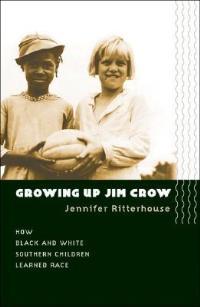 One of the most informative books I have read was Growing up Jim Crow: How Black and White Southern Children Learned Race, by Jennifer Ritterhouse. The author points out how differently these two races learned about what is and isn’t permitted at the time of Jim Crow. White children were often told “it just isn’t done” or “they know their place.” Black children were taught that to act in a way that wasn’t sanctioned by white society is very dangerous. For example, often young Black and white children played together until a certain age. For Black children, caution was drilled into them. If a Black boy and a white boy rough-housed and the white child came home with a black eye, the Black boy could be punished by whites. An unspoken reason for taboos was often the underlying threat of interracial dating, or what was called “race mixing.” So, I had to make sure characters don’t cross those lines without showing either reprisal or the threat of punishment.
One of the most informative books I have read was Growing up Jim Crow: How Black and White Southern Children Learned Race, by Jennifer Ritterhouse. The author points out how differently these two races learned about what is and isn’t permitted at the time of Jim Crow. White children were often told “it just isn’t done” or “they know their place.” Black children were taught that to act in a way that wasn’t sanctioned by white society is very dangerous. For example, often young Black and white children played together until a certain age. For Black children, caution was drilled into them. If a Black boy and a white boy rough-housed and the white child came home with a black eye, the Black boy could be punished by whites. An unspoken reason for taboos was often the underlying threat of interracial dating, or what was called “race mixing.” So, I had to make sure characters don’t cross those lines without showing either reprisal or the threat of punishment.
While I want to be accurate about the period we are portraying, I often have to write things that are not comfortable. But using language, attitudes, and social customs appropriate to the social mores of the time makes a novel more true to the time period.
~
Libby Ware is a native of West Virginia, and she feels most at home in the Appalachian mountains, although she has made her home in Atlanta, Georgia for more than 30 years. She is the owner of Toadlily Books, an antiquarian and collectible book business. Her short story, "The Circuit" (the beginning of LUM in slightly different form), was a finalist for the Poets and Writers Award for Georgia Writers, judged by Jennifer Egan. She is a member of Georgia Antiquarian Booksellers Association, the Atlanta Writers Club, and the Georgia Writers Association and is a fellow of The Hambidge Center for Creative Arts and Sciences. Visit her website at http://libbywarewriter.com.
~
Race in Historical FictionBy Libby Ware
As W. E. B. DuBois said, "The problem of the twentieth century is the problem of the color-line." I’d like to add that the problem was central to the nineteenth century and still is in the twenty-first century, as well. The problem for white writers is how to accurately portray African American characters within the context of the times in which the novel is set. Three things that are hard are: dialect; terminology; and the strictures that white supremacy placed on whites and Blacks.
 I do not like the use of dialect when used to misspell every other word, for example, “dem” for them, “I gwine” for I’m going, etc. I like to give a flavor of speech patterns, for example, using one colloquial word in a sentence or dropping a g off of a word, but not all words. And white Southerners have dialect, too, for example, “I’m fixin’ to go.” My book Lum is set in Appalachia in the 1930s, so I flavor all of the characters’ speech with words or sentences appropriate for the time. By researching diaries or novels written in the time period I’m writing about, I can get an idea of colloquialism to sprinkle into characters’ speech without going overboard.
I do not like the use of dialect when used to misspell every other word, for example, “dem” for them, “I gwine” for I’m going, etc. I like to give a flavor of speech patterns, for example, using one colloquial word in a sentence or dropping a g off of a word, but not all words. And white Southerners have dialect, too, for example, “I’m fixin’ to go.” My book Lum is set in Appalachia in the 1930s, so I flavor all of the characters’ speech with words or sentences appropriate for the time. By researching diaries or novels written in the time period I’m writing about, I can get an idea of colloquialism to sprinkle into characters’ speech without going overboard. A writer may need to use slurs as well as historically accurate names for other races. I hate the n-word, but since it was in use during the time I’m writing about, I used it when it suited the character and situation, as it does once or twice in my book. Another word that I can remember hearing when I was growing up is “nigra,” considered a slightly more genteel version of the n-word. I also used that word once or twice. Generally I used the term “colored.”
It is also important, but can be personally hard, to show how white supremacy is prevalent, even in sympathetic white characters. To write about a white person who always treats Black people equally in the time of slavery or Jim Crow is just not accurate. Degrees of individual racism existed, but remember that the whole of society was racist. Certainly some characters are less racist than others, but that line of division is still there.
 One of the most informative books I have read was Growing up Jim Crow: How Black and White Southern Children Learned Race, by Jennifer Ritterhouse. The author points out how differently these two races learned about what is and isn’t permitted at the time of Jim Crow. White children were often told “it just isn’t done” or “they know their place.” Black children were taught that to act in a way that wasn’t sanctioned by white society is very dangerous. For example, often young Black and white children played together until a certain age. For Black children, caution was drilled into them. If a Black boy and a white boy rough-housed and the white child came home with a black eye, the Black boy could be punished by whites. An unspoken reason for taboos was often the underlying threat of interracial dating, or what was called “race mixing.” So, I had to make sure characters don’t cross those lines without showing either reprisal or the threat of punishment.
One of the most informative books I have read was Growing up Jim Crow: How Black and White Southern Children Learned Race, by Jennifer Ritterhouse. The author points out how differently these two races learned about what is and isn’t permitted at the time of Jim Crow. White children were often told “it just isn’t done” or “they know their place.” Black children were taught that to act in a way that wasn’t sanctioned by white society is very dangerous. For example, often young Black and white children played together until a certain age. For Black children, caution was drilled into them. If a Black boy and a white boy rough-housed and the white child came home with a black eye, the Black boy could be punished by whites. An unspoken reason for taboos was often the underlying threat of interracial dating, or what was called “race mixing.” So, I had to make sure characters don’t cross those lines without showing either reprisal or the threat of punishment.While I want to be accurate about the period we are portraying, I often have to write things that are not comfortable. But using language, attitudes, and social customs appropriate to the social mores of the time makes a novel more true to the time period.
~
Libby Ware is a native of West Virginia, and she feels most at home in the Appalachian mountains, although she has made her home in Atlanta, Georgia for more than 30 years. She is the owner of Toadlily Books, an antiquarian and collectible book business. Her short story, "The Circuit" (the beginning of LUM in slightly different form), was a finalist for the Poets and Writers Award for Georgia Writers, judged by Jennifer Egan. She is a member of Georgia Antiquarian Booksellers Association, the Atlanta Writers Club, and the Georgia Writers Association and is a fellow of The Hambidge Center for Creative Arts and Sciences. Visit her website at http://libbywarewriter.com.
Published on November 05, 2015 04:00
November 3, 2015
Isabel Allende's The Japanese Lover, a decades-spanning saga of passion and history
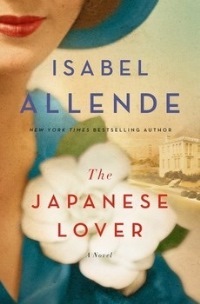 Themes of lasting passion, friendship, reflections in old age, and how people react to challenging circumstances all feature in Allende’s newest saga, which moves from modern San Francisco back to the traumatic WWII years. As always, her lively storytelling pulls readers into her characters’ lives immediately.
Themes of lasting passion, friendship, reflections in old age, and how people react to challenging circumstances all feature in Allende’s newest saga, which moves from modern San Francisco back to the traumatic WWII years. As always, her lively storytelling pulls readers into her characters’ lives immediately.Irina Bazili, personal assistant to elderly designer Alma Belasco, suspects her employer has a lover. What else would explain her secretive excursions from her nursing home and the mysterious yellow envelopes arriving in Alma’s mail?
Intervening sections reveal the lifelong bond between Alma, a Polish Jewish refugee sent to live with California relatives in 1939, and Ichimei Fukuda, sensitive youngest son of her family’s gardener. Despite many separations over the years, their love remains strong.
Descriptions of the Fukudas’ forced internment at a Utah camp, where life continues behind barbed wire, create a memorable impression. Equally haunting is Irina’s painful backstory, which skillfully unfolds. Although not as complex or richly detailed as Allende’s earlier novels, the story has many heartfelt moments, and readers will be lining up for it.
The Japanese Lover is published today by Atria/Simon & Schuster ($28, hardcover, 321pp, or $24.99 ebook). This review first appeared in Booklist's October 1st issue, in the High Demand section. The novel is is the top pick on the LibraryReads list for November.
Published on November 03, 2015 07:00
November 1, 2015
Finding a place to belong: Libby Ware's Lum: A Novel, set in 1930s Appalachia
“There will always be a place for you, Lum." Her grandmother’s words echoed through her thoughts. But where? Like a broom in the corner – used, then put back?
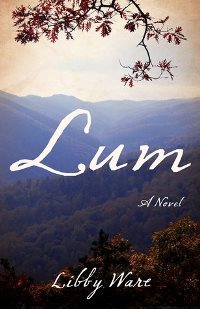 Born with the 20th century, Miss Columbia Carson – known as Lum to all and sundry – has always been a misfit, both in her Shenandoah Valley town and within her own family. An intersex woman who does her best to hide her condition, Lum secretly collects trading cards of sideshow performers, recognizing them as kindred spirits. She’s a talented cook and good with little children, and by 1933, she’s moved on to caring for a second generation of relatives. She lives with her brother and his wife half the year, her cousin Margaret and her husband the other. Lum puts up with their demands, for what choice does she have? That is, until kindly neighbors and the coming of the Blue Ridge Parkway offer new possibilities.
Born with the 20th century, Miss Columbia Carson – known as Lum to all and sundry – has always been a misfit, both in her Shenandoah Valley town and within her own family. An intersex woman who does her best to hide her condition, Lum secretly collects trading cards of sideshow performers, recognizing them as kindred spirits. She’s a talented cook and good with little children, and by 1933, she’s moved on to caring for a second generation of relatives. She lives with her brother and his wife half the year, her cousin Margaret and her husband the other. Lum puts up with their demands, for what choice does she have? That is, until kindly neighbors and the coming of the Blue Ridge Parkway offer new possibilities.
Lum’s background is parceled out bit by bit, in chapters dating back to earlier points in time. Although this makes the narrative feel jumpy at first, it gradually fills in the picture about the circumstances that shaped her life. Ware writes sensitively of Lum’s childhood visit to the doctor, who discourages her from ever marrying, and the close relationship with her grandmother that endures despite the older woman’s refusal to acknowledge her differences. The social context of the times is finely sketched, too: the people’s Appalachian dialect, their personal pride and widespread poverty, and their wariness towards outsiders – both the dark-skinned “Melungeons” living up on the mountain, and Yankees from the government who want buy up their farms.
This compact novel is a treat for those who appreciate character-centered historical fiction. Lum’s courageous journey toward independence makes her a heroine worth rooting for, and readers will find themselves missing her company after the final page turns.
Lum: A Novel was published by She Writes Press on October 20th ($16.95 pb / $8.49 ebook, 214pp). This review first appeared in the Historical Novel Society's indie reviews for November. Libby Ware will be stopping by here on Thursday with a guest post on race in historical fiction.
 Born with the 20th century, Miss Columbia Carson – known as Lum to all and sundry – has always been a misfit, both in her Shenandoah Valley town and within her own family. An intersex woman who does her best to hide her condition, Lum secretly collects trading cards of sideshow performers, recognizing them as kindred spirits. She’s a talented cook and good with little children, and by 1933, she’s moved on to caring for a second generation of relatives. She lives with her brother and his wife half the year, her cousin Margaret and her husband the other. Lum puts up with their demands, for what choice does she have? That is, until kindly neighbors and the coming of the Blue Ridge Parkway offer new possibilities.
Born with the 20th century, Miss Columbia Carson – known as Lum to all and sundry – has always been a misfit, both in her Shenandoah Valley town and within her own family. An intersex woman who does her best to hide her condition, Lum secretly collects trading cards of sideshow performers, recognizing them as kindred spirits. She’s a talented cook and good with little children, and by 1933, she’s moved on to caring for a second generation of relatives. She lives with her brother and his wife half the year, her cousin Margaret and her husband the other. Lum puts up with their demands, for what choice does she have? That is, until kindly neighbors and the coming of the Blue Ridge Parkway offer new possibilities. Lum’s background is parceled out bit by bit, in chapters dating back to earlier points in time. Although this makes the narrative feel jumpy at first, it gradually fills in the picture about the circumstances that shaped her life. Ware writes sensitively of Lum’s childhood visit to the doctor, who discourages her from ever marrying, and the close relationship with her grandmother that endures despite the older woman’s refusal to acknowledge her differences. The social context of the times is finely sketched, too: the people’s Appalachian dialect, their personal pride and widespread poverty, and their wariness towards outsiders – both the dark-skinned “Melungeons” living up on the mountain, and Yankees from the government who want buy up their farms.
This compact novel is a treat for those who appreciate character-centered historical fiction. Lum’s courageous journey toward independence makes her a heroine worth rooting for, and readers will find themselves missing her company after the final page turns.
Lum: A Novel was published by She Writes Press on October 20th ($16.95 pb / $8.49 ebook, 214pp). This review first appeared in the Historical Novel Society's indie reviews for November. Libby Ware will be stopping by here on Thursday with a guest post on race in historical fiction.
Published on November 01, 2015 10:56
October 30, 2015
An enduring friendship: Oscar Hijuelos' final novel, Twain and Stanley Enter Paradise
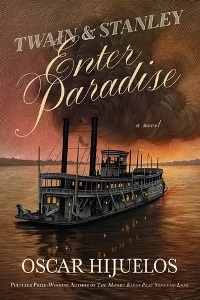 Chronicling the friendship between Welsh-born explorer Henry Morton Stanley and beloved American raconteur Samuel Clemens (aka Mark Twain), Hijuelos’ deeply researched final novel was completed just before he died, in 2013. Although this expansive look at the connection between two eminent nineteenth-century men may be a departure from his examinations of the immigrant experience, his gift for evoking his protagonists’ rich interior lives is on full display.
Chronicling the friendship between Welsh-born explorer Henry Morton Stanley and beloved American raconteur Samuel Clemens (aka Mark Twain), Hijuelos’ deeply researched final novel was completed just before he died, in 2013. Although this expansive look at the connection between two eminent nineteenth-century men may be a departure from his examinations of the immigrant experience, his gift for evoking his protagonists’ rich interior lives is on full display.The novel shows a remarkable fidelity to historical voice. It’s told through a combination of formats, including straight narrative, letters, memoir, and diary entries—all invented, and convincingly so. Even Stanley’s “cabinet manuscript” about his and Samuel’s excursion to Cuba fits with the real man’s tendency to blur or exaggerate the truth.
From their initial meeting, aboard a Mississippi steamship, then moving through their stints on the lecture circuit, Stanley’s relationship with vivacious artist Dorothy Tennant, and their beautifully moving ruminations on mortality in their twilight years, their rapport survives several differences of opinion. Both come to loathe slavery but disagree about religion and the value of imperialism, particularly in Africa.
By observing them at many moments of vulnerability, readers gain insights into their makeup. Although the book feels unbalanced in places due to its unusual cobbled-together structure, it’s an extraordinary feat of imaginative historical re-creation.
Twain and Stanley Enter Paradise is published in November by Grand Central ($28 hb, $14.99 ebook, 480pp). This starred review first appeared in Booklist's 9/15 issue.
Some other notes:
After working on it for more than a decade, Hijuelos had completed the manuscript and was in the process of revisions when he died suddenly. His widow, author Lori Marie Carlson, worked with his editor to get the manuscript into its final version. Read more at the New York Times: Hijuelos Novel to be Published Posthumously.
This book is one example of how a character doesn't necessarily have to be likable in order to be interesting to read about. Samuel Clemens was the more appealing of the two, personally. Although he was a fascinating character, I found many of Stanley's actions less than admirable. That said, Stanley isn't depicted as complicit in King Leopold's of Belgium's crimes against the Congolese people, as was claimed during his lifetime, and afterward. Hijuelos takes a similar viewpoint to Tim Jeal in his award-winning reappraisal of the man, Stanley: The Impossible Life of Africa's Greatest Explorer.
Regarding Clemens, I'm looking forward to reading Lynn Cullen's Twain's End, which looks at the twilight years of his life, and his relationship with his secretary Isabel Lyon.
Published on October 30, 2015 07:00
October 27, 2015
A week of presentations
Last week was a bit busy around here. In addition to the usual – answering reference questions and teaching classes to introduce university students to library research – I had opportunities to give two presentations of a different sort.
On Monday evening, I spoke with the students of Dr. Fern Kory's graduate English seminar on youth media reviewing about the historical fiction genre, best practices in reviewing, and the differences between professional reviewing and blogging. I've put those slides online for anyone interested in taking a look. I cribbed from past presentations, so a few of the slides may be familiar.
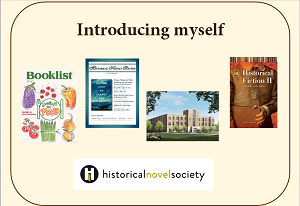
It covered topics I think about and work with every day, as a reviews editor and reviewer, but rarely get the chance to speak about. The students had good questions.
Then on Wednesday (my birthday!) I headed out to Peoria for the Illinois Library Association conference. Two library colleagues, Janice Derr and Pam Ferrell, and I gave a presentation Thursday morning on readers' advisory in the academic library, with resources supporting academic libraries' establishment of popular reading collections. For those slides, which are hosted in EIU's institutional repository, visit the link and click on the Download button.
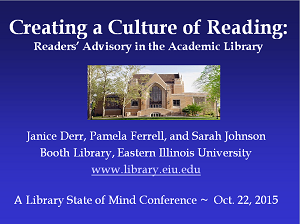
New knowledge isn't all that I brought home from Peoria, though, since I caught a cold at the conference and have been lying low since, alternately resting and catching up with my overlarge NetGalley queue. I'm determined to move my "reviewed" percentage a bit higher!
On Monday evening, I spoke with the students of Dr. Fern Kory's graduate English seminar on youth media reviewing about the historical fiction genre, best practices in reviewing, and the differences between professional reviewing and blogging. I've put those slides online for anyone interested in taking a look. I cribbed from past presentations, so a few of the slides may be familiar.

It covered topics I think about and work with every day, as a reviews editor and reviewer, but rarely get the chance to speak about. The students had good questions.
Then on Wednesday (my birthday!) I headed out to Peoria for the Illinois Library Association conference. Two library colleagues, Janice Derr and Pam Ferrell, and I gave a presentation Thursday morning on readers' advisory in the academic library, with resources supporting academic libraries' establishment of popular reading collections. For those slides, which are hosted in EIU's institutional repository, visit the link and click on the Download button.

New knowledge isn't all that I brought home from Peoria, though, since I caught a cold at the conference and have been lying low since, alternately resting and catching up with my overlarge NetGalley queue. I'm determined to move my "reviewed" percentage a bit higher!
Published on October 27, 2015 06:44
October 26, 2015
Dark River Melody: Voices from Old London Town, an essay by M.D. Murphy
Today M. D. Murphy is here with an essay about the inspiration for his atmospheric debut novel, Dark River Melody, which takes place amid the political and social struggles of Georgian London.
~
Dark River Melody: Voices from Old London Town
M. D. Murphy
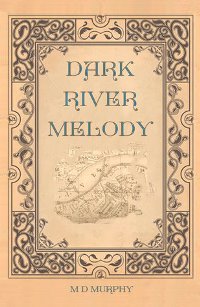 The germ of Dark River Melody probably started at the British Library while researching for my PhD. I was writing a thesis on the radicalism of Samuel Taylor Coleridge in the 1790s, a turbulent period in England’s political history. Working my way through a mountain of old newspapers, pamphlets and various publications, I found myself being drawn into a world that was both captivating and abhorrent. I recall being struck by the brutality and oppressive mechanisms of the state against those who dared to speak out against the Church, Monarchy and Government. I was also stunned by the brutal way that the urban poor were punished for petty crimes.
The germ of Dark River Melody probably started at the British Library while researching for my PhD. I was writing a thesis on the radicalism of Samuel Taylor Coleridge in the 1790s, a turbulent period in England’s political history. Working my way through a mountain of old newspapers, pamphlets and various publications, I found myself being drawn into a world that was both captivating and abhorrent. I recall being struck by the brutality and oppressive mechanisms of the state against those who dared to speak out against the Church, Monarchy and Government. I was also stunned by the brutal way that the urban poor were punished for petty crimes.
I was supposed to be concentrating on my thesis but was constantly distracted by the moving human stories I encountered. I found myself frequently sidetracked to read a newspaper report or trial proceedings about a hanged thief, a transported prostitute, a drunk in the pillory. None of this was getting my PhD finished, but it was compulsive and impossible to ignore. Unconsciously, I had started to write Dark River Melody without putting ink to paper.
Some years after finishing my PhD, I began to write my novel. I chose Georgian London because I was passionate about the period and location. Much of the research for the novel was established from my previous studies, and I was born and lived in London for the first 38 years of my life. London in the 1790s, then, seemed the obvious place to start. Moreover, my research had left an indelible mark on my psyche – it uncovered a cityscape awash with opium dens, cellar brothels, public floggings and squalid street life – all of which I felt compelled to communicate.
And what a city London is for capturing the imagination. Its grand buildings, cobbled streets, secluded courtyards and dark alleyways are a gift to any writer. Dividing the metropolis is the greatest gift of all – the river. The Thames has a bewitching presence in the capital, one that cannot be ignored. Writers from all periods have been drawn to it – Wordsworth was enthralled by the view from Westminster Bridge; T. S. Eliot saw the river as a focal point for human dejection; Ray Davies juxtaposed the “dirty old river” with the paradise of a “Waterloo Sunset”. I thought the river would bring atmosphere to the novel, a mixture of power, beauty and menace; it is the unconscious backbone of the tale.
In Dark River Melody I wanted to tell the story of those early radicals whose struggle played a role in the liberties that we share today: the right to vote, the building of the trade unions, women’s rights, the welfare state and so on. However, the early drafts of the novel were not overtly political and had more to do with encapsulating the social conditions of the period. I wanted to bring the sights, sounds, smells and tastes of Georgian London to the page. I wanted the reader to get a palpable sense of the capital in all its terrible glory, its poetic squalor.
As I went through the drafting process, I came to see there was an important historical narrative here that needed to be told: that of the pamphlet wars of the 1790s. The French Revolution had an immeasurable impact on social change in England. This sparked a debate between the renouncers and supporters of the Revolution, which was played out in the form of battling pamphlets. The Revolution gave impetus to the English reform movement who now had a paradigm for social change at home. As the decade progressed, at war with France and in fear of invasion, the authorities clamped down on reforming activity and insurrection, driving it underground. England had become a dangerous place for radicals who were often hounded by the law or hunted by Church and King mobs.
While the subject of the pamphlet wars had been extensively covered by academics, it hadn’t reached the popular imagination. Fiction then, seemed a more accessible vehicle to bring the story to the public consciousness. To authenticate the fiction I brought in historical figures, such as Samuel Taylor Coleridge, Joseph Johnson, Mary Wollstonecraft and John Thelwall. They help to locate the novel within the precise period, and add historical credibility to my story and characters. Their inclusion is also a fun way of celebrating those radical figures that I so admire – for their bravery in the face of danger, for their commitment to free speech and equal rights.
While I can account for some aspects of why and how I began the novel, there is also a creative element that cannot be rationalized. Looking back and saying it was this or that, is only part of the picture, a need to find expression for something that is ultimately beyond me, and can never be known. But there is one thing I do remember … on a rainy day, seated at my desk in a dimly lit attic, three magic words came to me. From where they came I shall never know – Dark River Melody – they whispered, as if a spirit had spoken from old London town.
~
M. D. Murphy comes from the London-Irish community. He has a PhD in English Literature from Lancaster University. His academic essays have been published in The Coleridge Bulletin and Romanticism. His poetry has appeared in many publications, including Staple and Poetry Ireland Review. Dark River Melody (Cutting Edge Press, 2015) is his first novel.
~
Dark River Melody: Voices from Old London Town
M. D. Murphy
 The germ of Dark River Melody probably started at the British Library while researching for my PhD. I was writing a thesis on the radicalism of Samuel Taylor Coleridge in the 1790s, a turbulent period in England’s political history. Working my way through a mountain of old newspapers, pamphlets and various publications, I found myself being drawn into a world that was both captivating and abhorrent. I recall being struck by the brutality and oppressive mechanisms of the state against those who dared to speak out against the Church, Monarchy and Government. I was also stunned by the brutal way that the urban poor were punished for petty crimes.
The germ of Dark River Melody probably started at the British Library while researching for my PhD. I was writing a thesis on the radicalism of Samuel Taylor Coleridge in the 1790s, a turbulent period in England’s political history. Working my way through a mountain of old newspapers, pamphlets and various publications, I found myself being drawn into a world that was both captivating and abhorrent. I recall being struck by the brutality and oppressive mechanisms of the state against those who dared to speak out against the Church, Monarchy and Government. I was also stunned by the brutal way that the urban poor were punished for petty crimes.I was supposed to be concentrating on my thesis but was constantly distracted by the moving human stories I encountered. I found myself frequently sidetracked to read a newspaper report or trial proceedings about a hanged thief, a transported prostitute, a drunk in the pillory. None of this was getting my PhD finished, but it was compulsive and impossible to ignore. Unconsciously, I had started to write Dark River Melody without putting ink to paper.
Some years after finishing my PhD, I began to write my novel. I chose Georgian London because I was passionate about the period and location. Much of the research for the novel was established from my previous studies, and I was born and lived in London for the first 38 years of my life. London in the 1790s, then, seemed the obvious place to start. Moreover, my research had left an indelible mark on my psyche – it uncovered a cityscape awash with opium dens, cellar brothels, public floggings and squalid street life – all of which I felt compelled to communicate.
And what a city London is for capturing the imagination. Its grand buildings, cobbled streets, secluded courtyards and dark alleyways are a gift to any writer. Dividing the metropolis is the greatest gift of all – the river. The Thames has a bewitching presence in the capital, one that cannot be ignored. Writers from all periods have been drawn to it – Wordsworth was enthralled by the view from Westminster Bridge; T. S. Eliot saw the river as a focal point for human dejection; Ray Davies juxtaposed the “dirty old river” with the paradise of a “Waterloo Sunset”. I thought the river would bring atmosphere to the novel, a mixture of power, beauty and menace; it is the unconscious backbone of the tale.
In Dark River Melody I wanted to tell the story of those early radicals whose struggle played a role in the liberties that we share today: the right to vote, the building of the trade unions, women’s rights, the welfare state and so on. However, the early drafts of the novel were not overtly political and had more to do with encapsulating the social conditions of the period. I wanted to bring the sights, sounds, smells and tastes of Georgian London to the page. I wanted the reader to get a palpable sense of the capital in all its terrible glory, its poetic squalor.
As I went through the drafting process, I came to see there was an important historical narrative here that needed to be told: that of the pamphlet wars of the 1790s. The French Revolution had an immeasurable impact on social change in England. This sparked a debate between the renouncers and supporters of the Revolution, which was played out in the form of battling pamphlets. The Revolution gave impetus to the English reform movement who now had a paradigm for social change at home. As the decade progressed, at war with France and in fear of invasion, the authorities clamped down on reforming activity and insurrection, driving it underground. England had become a dangerous place for radicals who were often hounded by the law or hunted by Church and King mobs.
While the subject of the pamphlet wars had been extensively covered by academics, it hadn’t reached the popular imagination. Fiction then, seemed a more accessible vehicle to bring the story to the public consciousness. To authenticate the fiction I brought in historical figures, such as Samuel Taylor Coleridge, Joseph Johnson, Mary Wollstonecraft and John Thelwall. They help to locate the novel within the precise period, and add historical credibility to my story and characters. Their inclusion is also a fun way of celebrating those radical figures that I so admire – for their bravery in the face of danger, for their commitment to free speech and equal rights.
While I can account for some aspects of why and how I began the novel, there is also a creative element that cannot be rationalized. Looking back and saying it was this or that, is only part of the picture, a need to find expression for something that is ultimately beyond me, and can never be known. But there is one thing I do remember … on a rainy day, seated at my desk in a dimly lit attic, three magic words came to me. From where they came I shall never know – Dark River Melody – they whispered, as if a spirit had spoken from old London town.
~
M. D. Murphy comes from the London-Irish community. He has a PhD in English Literature from Lancaster University. His academic essays have been published in The Coleridge Bulletin and Romanticism. His poetry has appeared in many publications, including Staple and Poetry Ireland Review. Dark River Melody (Cutting Edge Press, 2015) is his first novel.
Published on October 26, 2015 04:00
October 21, 2015
Dolores Gordon-Smith's After the Exhibition, a mystery of art, blackmail, and secrets
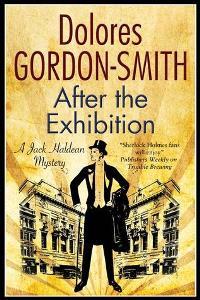 Set in England in the mid-1920s, this complicated maze of a mystery is full of promising leads, frustrating dead ends, and puzzles wrapped in puzzles. It has the most eventful plot I’ve seen for a novel of its length. To use a period metaphor, at times it feels like a phonograph record played at double the proper speed.
Set in England in the mid-1920s, this complicated maze of a mystery is full of promising leads, frustrating dead ends, and puzzles wrapped in puzzles. It has the most eventful plot I’ve seen for a novel of its length. To use a period metaphor, at times it feels like a phonograph record played at double the proper speed.To her credit, though, the author carefully tracks every little strand of the plot and ties the threads up tidily in the end. After finishing, I skimmed through the novel again, noticing on a second time around how well the clues had been laid.
Keeping true to form for a traditional British mystery, the village of Whimbrell Heath in Surrey is populated by eccentric characters – whose personalities, it must be said, outshine the series detectives. Who are: Major Jack Haldean, a famous crime writer, and his friend Bill Rackham, Chief Inspector at Scotland Yard. They stumble upon odd happenings in London while attending an exhibition of church art, an event one would expect to be rather sedate. Not so much.
Employees of Lythewell and Askern, a firm specializing in ecclesiastical artwork and furnishings, have traveled up from Whimbrell Heath to participate. Bill’s an old wartime buddy of Colin Askern, son of one of the owners, while Jack finds himself more intrigued by attractive Betty Wingate, Colin’s friend and Lythewell’s niece.
When a woman selling flags for charity passes out in shock on the street, crying out “Art!”, they help her and write it off as a peculiar event. Then things turn even stranger. The next day, when Betty approaches Bill and Jack, claiming that an Italian lady was murdered in her cottage back home, they’re compelled to investigate. Betty’s upset, since Colin and other villagers dismiss her as hysterical: the body she saw has vanished.
Jack and Bill make a good team, and their easygoing banter livens things up, though more backstory – this is the 8th in the series – would have helped me know them better. But with revelations of blackmail, jealousy, overlarge egos, and rumors of hidden treasure, there was more than enough to hold my attention as one stunning revelation after another came to light.
After the Exhibition was published by Severn House in 2014 ($28.95 hb, $13.99 ebook, 240pp). Thanks to the publisher for the NetGalley download; I'm slowly working my way through my NetGalley queue!
Published on October 21, 2015 11:07



